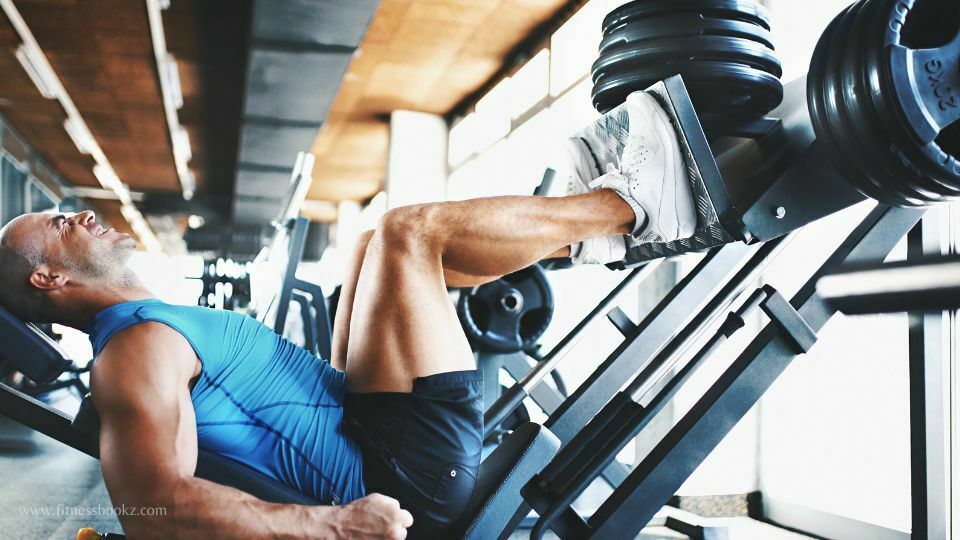
When you think about “leg day,” thoughts frequently drift to the barbell or huge machines like the leg press and hack squat. We can see why dumbbells wouldn’t be your first choice.
Heavy lifts are essential for substantial bulk and strength gains, and it’s easier to get such results with smith machines, barbells, and trap bars.
Dumbbells, on the other hand, are an excellent and versatile tool for auxiliary workouts that may help you improve imbalances or add additional volume to your training for better muscular growth of your legs.
Those are not things to be disregarded. What’s the first thing that pops into your head when you hear the phrase Leg Day?
Here we’ll explore what advantages dumbbells may bring to your lower body workouts and the 12 greatest dumbbell leg exercises you should start implementing into your program.
Advantages of Dumbbell Leg Workout
Machines, barbells, and trap bars will enable you to move the maximum weight when it comes to growing lower body strength and muscle.
Still, it doesn’t imply you shouldn’t get any rewards from dumbbell training.
Consider these major upsides of utilizing dumbbells in your leg workouts:
- Better Balance: Legs can be trained unilaterally with a single dumbbell, which is helpful in addressing strength imbalances and improving overall balance.
- Simple to Use: Dumbbells are safer and simpler to use than barbells and free weights. Dumbbells are the most efficient way to increase the volume of your leg exercises.
- Freedom of Movement: Dumbbells provide more mobility and a wider variety of training options than barbells and trap bars. Dumbbell training allows you to experiment with various factors, such as load position and body posture.
- Simpler Learning Curve: Dumbbells have a far more gentle learning curve than barbells, making them ideal for trying new exercises. A loaded barbell makes it much more difficult to maintain a secure hold.
- Build more Volume: Using dumbbells, you can lift more weight without putting undue pressure on your spine or joints, allowing you to focus on building muscle rather than worrying about injury.
All in all, dumbbells are adaptable, safe, and simple to use. Even if you’re just starting weight training, you can become strong and bulk up quite a bit using dumbbells.
Dumbbells are also an excellent tool for experienced trainers looking to increase targeted volume and improve muscle group development.
Top 12 Dumbbell Leg Exercises
If you want stronger legs for the upcoming summer season and want to be beach ready, these 12 dumbbell leg workouts will get you there:
1. Bulgarian Split Squats
Because they are a unilateral exercise, dumbbell split squats assist in correcting leg length discrepancies, which improves performance across the board and, in particular, during squats.
Squatting up from the “hole” requires strong quadriceps, so doing Bulgarian split squats is a great way to strengthen those muscles. If you want to increase the weight, you can squat or deadlift, or if you just wish for stronger legs and glutes, this is the workout for you.
Muscles targeted: Thighs, hips, and buttocks. Best sets: 8-16.
Procedure:
- Keep your chest up and your shoulders down while holding one or two dumbbells in your chosen posture.
- Place your feet hip-width apart and your knees directly over your ankles.
- Straighten up by reestablishing your balance and pushing your one foot firmly into the ground.
- Return to a half-kneeling stance and repeat.
2. Goblet Squats
The goblet squat is a fantastic alternative if you’re looking to perfect your squat technique, increase your hip mobility, and strengthen your anterior core.
Because of the forward placement of the load, you will naturally maintain a more upright torso position, resulting in a more efficient and profound squat.
The dumbbell goblet squat improves hip mobility, which in turn aids performance on the barbell squat and deadlift.
It’s a great quad-focused exercise, so even professionals utilize it to pump up their leg exercises.
While holding steady, twist your torso toward your front leg. Twist your torso back to starting position, and push off your front heel, balanced on one leg.
Leg Muscles targeted: Quadriceps. Best sets: 8-20.
Procedure:
- Position your feet in a position that you find comfortable, and hold a dumbbell in a goblet grip.
- Squat down until your elbows almost touch the inside of your knees, keeping your chest high and your shoulders relaxed.
- After pausing, you should push off the ground with both feet, stand up straight, and finish by clenching your glutes.
- Count reps while you reset and do it again.
3. Front Squats
The barbell is placed across the front of the shoulders for the front squat with dumbbells. Anterior dumbbell holding positions emphasize the upper body, quadriceps, and abs more.
It’s a variation on the front squat using a barbell. The teardrop muscle, one of the four quadriceps muscles, is more actively recruited during the dumbbell front squat.
Muscles targeted: Quadriceps, upper back, anterior core, and glutes. Best sets: 6-12.
Procedure:
- Keep your chest high, and your shoulders down as you curl the dumbbells to the front rack position.
- Put yourself in a squatting stance that feels comfortable.
- Lower body Squat down as much as you can without rounding your back or bending forward too much at the waist.
- Be sure your arms are at a right angle to your body.
- When your target depth has been attained, return to the top of the squat.
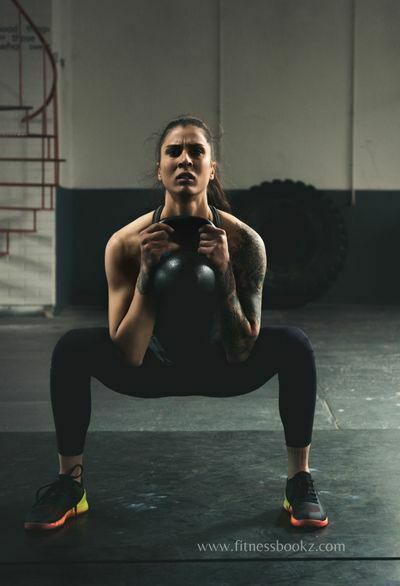
4. Raised Split Squats
Dumbbell-raised split squats are the most effective exercise for improving barbell squat and deadlift performance if you like discomfort.
Hip mobility, leg drive, and muscle-building potential are all enhanced by the raised back foot, which allows the working quad and glute to spend more time under strain.
You can’t have a successful dumbbell leg workout with this.
Here are a few common ways to hold dumbbells for lower body moves: Front Rack – With one or two dumbbells
Muscles targeted: Quads, abductors/adductors, and glutes. Best sets: 6-12.
Procedure:
- Straighten up and bring a set of dumbbells to the front rack.
- To reduce the time spent switching leg days, prop up your rear foot on a weight bench and place a weight plate under your front foot.
- Keep a small forward lean in your body and drop your back knee to the floor.
- Push your front foot through the floor to return to the starting position
- Return to step one and do it again, this time switching roles.
5. Dumbbell Jump Squat
Dumbbell jump squats are excellent for developing lower body strength and power, but only if the weight is appropriately distributed.
Try working with around 20% of your body weight for optimal results. With Dumbbell jump squats, you’re not building strength so much as explosiveness and speed, so adjust your weight appropriately.
Since your spine is not directly loaded during this exercise, it is often safer than the barbell squat.
Muscles targeted: Calf, thigh, buttock, and hamstring. Best sets: 6-12
Procedure:
- You should be able to support around 20% of your body weight. Put the weights by your sides.
- Put your chest out and your shoulders back as you squat.
- Jump up high and hard, letting your feet fly off the ground before landing gently on your toes and heels.
- Squat back down and up a certain number of times.
Recommend to read: What is the secret to bodybuilding?
6. Side Lunge
Engaging the gluteus medius and minimus, the smaller hip muscles, and side lunges will help you build your glutes in a new plane of action.
The adductors (groin) are worked on in tandem with the side lunge, which helps strengthen and mobilize them.
This increases the hip range of motion and lessens the likelihood of groin strains. You may increase your agility and the ease with which you can move about by doing side lunges against resistance.
Muscles targeted: Hamstrings, quadriceps, and glutes. Best sets: 8-16.
Procedure:
- It would be best if you were standing tall with your feet together and your dumbbells in whichever posture you find most comfortable. Typically, the goblet or in-between-the-legs position works well.
- Then, swing your left leg out to the side dramatically.
- Keep your right leg straight with your toes pointing front as you hinge your left hip back. As you bend forward at the waist and approach your left knee, you should feel a stretch in the adductor muscle on the right side of your thigh.
- You should return to the initial posture by firmly planting your left knee on the ground.
- Count reps while you reset and do it again.
7. Front Lunge
The quadriceps are most worked during forward lunges since the knee takes most of the forward step.
If your knees and hips are in excellent shape, you may make as many forward lunges as you want.
Excellent for developing strong quads and glutes. Your heart rate will also increase because of this. If you already have knee pain, you should give this one a pass.
Muscles targeted: Quads, glutes, and hamstrings. Best sets: 10-12.
Procedure:
- Stand tall while holding one or two dumbbells in your desired grip.
- Put your back leg on the floor as you stride forward until your front thigh is virtually perpendicular to the ground.
- You should first drive through your front foot to bring your feet together.
- You may either focus on one side for all your repetitions or switch it over every few.
8. Reverse Lunge
Because they focus on the hips rather than the legs, reverse lunges are gentler on the knees than other lunge variants and single-leg workouts.
Those with knee discomfort can benefit greatly from the reverse lunge.
Being hip dominant may help you become more mobile in your squats and dumbbell deadlifts because of the increased mobility in your hips.
Muscles targeted: hamstrings, quadriceps, and glutes. Best sets: 8-16.
Procedure:
- Hold one or two dumbbells in your chosen grip and stand tall with your feet hip-width apart.
- Lower your hips until your right leg is parallel to the floor, and then take a little (quads) or big (glutes) stride back with your left leg. Both of your knees should be straight and facing forward.
- You should aim to maintain your chest out and your shoulders down. Keep your shoulder blades down and back the whole time.
- Then, revert to the initial posture by driving your right leg back through the floor.
Read also: How long should it take to lose 20 lbs?
9. Curtsy Lunge
The sagittal (up and down) and frontal (side to side) planes account for all the motions here. However, the transverse rotational plane of motion is often overlooked.
Curtsying to the queen is a great way to work the hip flexors, glutes, and quadriceps in the rotational plane.
Stronger, more evenly distributed muscular growth results from training these muscles from various angles.
Muscles targeted: Quadriceps, hip adductors, hip abductors, glutes, and hamstrings are targeted. Best sets: 8-15
Procedure:
- With a dumbbell in each hand stand with your feet hip-width apart.
- Step diagonally behind you with your right foot and bend your right knee nearly to the floor.
- Ideally, the working leg will be almost parallel to the floor.
- You must put your whole weight on your left leg and push off to rise to get back to a standing position.
- First, do all of your repetitions on one side, switch, and do the other.
10. Romania Deadlift
You may use less weight and a wider variety of grips in the Romanian dumbbell leg deadlift compared to the barbell version.
Changing your grip on the dumbbells allows you to work for various muscle groups in various ways.
If you don’t have a barbell around or just want to switch things up, the dumbbell deadlift is a wonderful alternative.
Muscles targeted: Hamstrings and glutes. Best sets: 12-16.
Procedure:
- Keep your feet hip-width apart and your toes pointing forward while you hold one or two dumbbells in front of your quadriceps.
- Hinge forward until the dumbbells are just below your knees while keeping your chest high and shoulders down.
- Then, after a little break, tighten your hamstrings and glutes and rise up on the hinge.
- Count reps while you reset and do it again.
11. Single-Leg RDL
When working your legs with dumbbells, the one-leg RDL is one of the more challenging moves. This means you should begin with your own body weight before moving on to lighter weights, such as dumbbells.
There are several advantages to doing these exercises correctly. These advantages include lessening muscular imbalances, avoiding hamstring strains, gaining stability, and bulking up your glutes.
Muscles targeted: Hamstrings, glutes, and calves. Best sets: 6-12.
Procedure:
- In front of or next to your quadriceps, hold one or two dumbbells.
- Drop to your toes, stabilize yourself on the ball of one foot, and bend your working knee.
- Hinge back trying, keeping your chest and shoulders up, and avoid rotating your working hip up.
- Flex your working hamstring by bending at the waist until your belly button is parallel to the floor.
- Reset and try again from the beginning.
12. Step Up Weights
One of the best single-leg workouts is the dumbbell step-up, which is more complex than it seems.
The glutes and the quadriceps got a workout from the need to maintain balance and the wide range of motion involved.
Therefore, do not fall for any false pretenses. Raising or lowering the box will cause the workout to advance or regress accordingly.
Weighted step-ups increase explosive leg power, increasing vertical leap and sprinting velocity.
Muscles targeted: Quads and glutes. Best sets: 6-15.
Procedure:
- Place one or two dumbbells at arm’s length and face a box at or above knee height.
- Step up onto the raised platform, being careful to maintain your balance.
- Your goal should be to extend your knee and bring your feet together by driving through your front foot.
- Bring the leg that isn’t functioning down to the floor slowly.
- Start over again—complete one set of repetitions on one side before moving on to the other.
In Conclusion
Leg exercises with dumbbells are among the most popular because of their convenience, safety, and adaptability.
Incorporate some of these movements into your leg training regimen to help you improve imbalances and boost volume for optimal muscular development.
Even if you just have access to dumbbells for your training, you can still get the benefits of a robust leg workout by including the aforementioned moves into a routine.


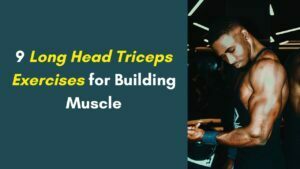
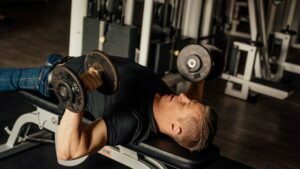
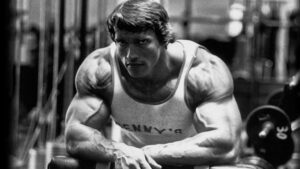
Pingback: 15 Best Dumbbell Chest Exercises for Upper Body Workouts
Pingback: Strength Exercises Without Equipment at Home - Fitness Bookz
Pingback: Top 9 Weight Loss Plans that Works - Fitnss Bookz
Pingback: Smith Machine Squats: Benefits and Perfect Form - Fitness Bookz
Pingback: Arnold Split: Full Workout Routine & Positives, Negatives
Pingback: 15 Best Leg Workouts For Building Muscles - Fitness Bookz
Pingback: Best Long Head Triceps Exercises for Bodybuilding
Pingback: How Much Does a Smith Machine Bar ACCURATE Weight?
Pingback: 9 Tips to Boost Testosterone - Fitnessbookz.com